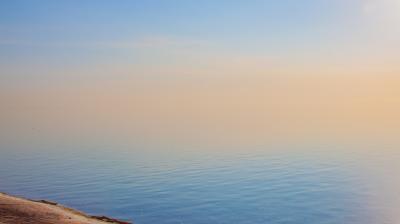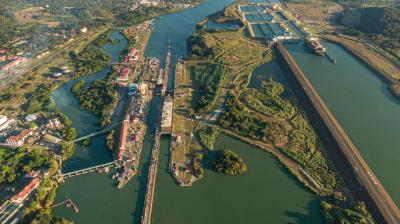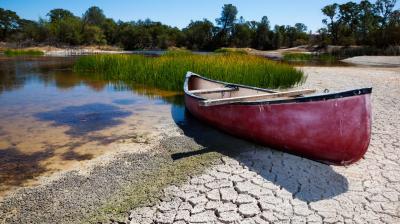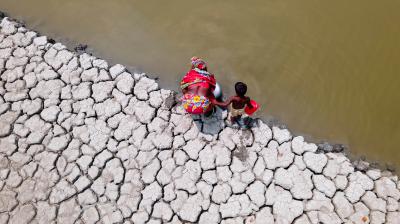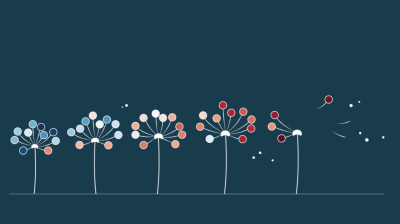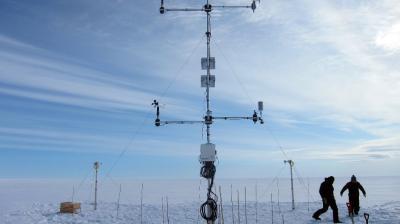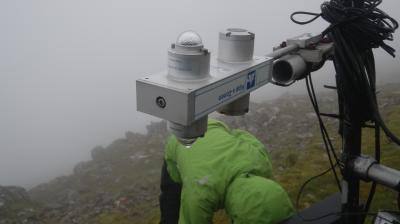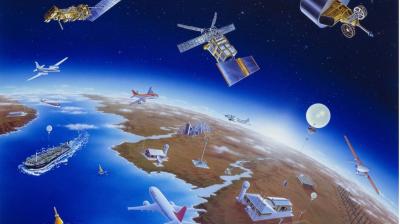WMO launches Arctic Regional Climate Centre Network
First ever Pan-Arctic Regional Climate Outlook Forum provides predictions for summer season
A new Pan-Arctic Climate Outlook Forum has met for the first time to provide predictions for the forthcoming summer season as part of an international drive to improve weather, climate and sea ice forecasts in a region undergoing rapid environmental change.

First ever Pan-Arctic Regional Climate Outlook Forum provides predictions for summer season
A new Pan-Arctic Climate Outlook Forum has met for the first time to provide predictions for the forthcoming summer season as part of an international drive to improve weather, climate and sea ice forecasts in a region undergoing rapid environmental change.
Surface temperatures are expected to continue to be above average for June, July and August 2018, whilst sea ice is forecast to be below normal for most of the Arctic, according to the outlook.
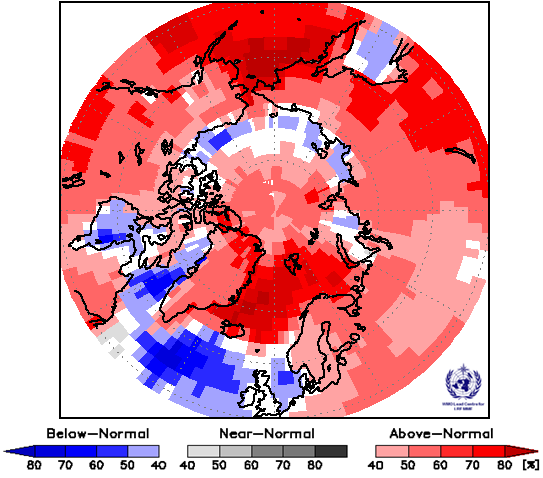
|
| Multi-model ensemble probability forecast of three categories (below normal, near normal, above normal) for surface temperature for summer 2018 (wmolc.org). |
The reality of climate change and its impacts prompted the decision to initiate pan-Arctic seasonal predictions, based on regional collaboration approaches that are already well established in most other parts of the world. It will provide up to date summer and winter seasonal predictions to support on-going climate change adaptation and decision-making in climate-sensitive sectors.
The World Meteorological Organization co-sponsored the 15-16 May meeting, which was hosted by Environment and Climate Change Canada in Ottawa and was attended by member countries of the Arctic Council.
Designed as a two-way dialogue, the session heard from representatives of Arctic indigenous organizations who have lived for generations in the Arctic who shared their knowledge about changing conditions, the challenges they face, and the type of forecasts and climate services they need.
The climate forum also invited commercial shipping stakeholders from the dry-bulk and tourism sectors. They need access to climate and weather information in the Arctic to better inform their activities and ensure not only their safety, but the protection of the environment.
Martine Dubuc, Associate Deputy Minister of Environment and Climate Change Canada said Arctic indigenous communities were first-hand witnesses of the “unprecedented challenge of climate change.”
“Generations, over the past century, have felt temperatures increase at a rate almost twice that of the rest of the world. They’re seeing changes in permafrost that have serious implications for local infrastructure. And they’re facing threats to their food security and traditional ways of life,” said Ms Dubuc in an opening address.
World Meteorological Organization President David Grimes told the forum that melting of sea ice, permafrost and coastal erosion had the most immediate impact on local communities but also had long-lasting global implications.
“Coordinated oversight is critical in these sparsely-populated, remote parts of the world. There is an urgent need to better understand if and how the loss of ice that is happening as a result of the changing climate will impact local, regional, and global climate dynamics,” said Mr Grimes, who is Assistant Deputy Minister and head of Environment and Climate Change Canada's Meteorological Service.
“What happens in the Arctic does not stay in the Arctic,” he said.
The Pan-Arctic Regional Climate Outlook Forum (PARCOF) is the first step towards the establishment of an Arctic Regional Climate Centre Network, which is based on WMO’s Regional Climate Centre concept and will receive active contributions from all the Arctic Council member countries. Its structure will consist of three sub-regional geographical nodes, namely, (i) North America Node, (ii) Northern Europe and Greenland Node and (iii) Eurasia Node.
The PARCOF will be held on a regular basis to share advances in climate research, , meet with key decision-makers and important partner organizations to discuss priority products for climate-sensitive users. Permanent Participants of the Arctic Council will be invited to all future PARCOFs.
The presence or absence of ice regulates many activities in the Arctic such as transportation, fishing and hunting, tourism, resource extraction, etc.
The Arctic experiences two main seasons: a long and icy winter of about 9 months and a short and cool summer of about 3 months. Freezing and thawing periods on the fringes of these two seasons are among the most important considerations for many sectors.
Therefore, PARCOF sessions will be held twice per year: a face-to-face meeting in April/May preceding the summer ice break-up, and a virtual meeting in October before the ice returns in the Arctic winter season.
Summary of the Pan-Arctic Climate Outlook for Summer 2018
Strong warm oceanic temperatures, predominant atmospheric circulation, and the distribution of sea ice are the main contributors of predictability over Arctic regions such as the Bering and Greenland seas and adjacent coastal areas.
Temperature: The November 2017 to April 2018 average surface temperature in the Arctic domain north of 65°N was the third highest since 1949. Surface temperatures over the same region are expected to continue to be above average for June, July and August (summer) 2018, with probabilities ranging between 40 and 70%.
Precipitation: Precipitation during the period October 2017 to March 2018 was slightly above average over the Arctic region. For the upcoming summer, Alaska, western Canada, the Canadian Arctic Archipelago, and the easternmost parts of Russia have a slight chance of above normal precipitation, while the Gulf of Bothnia has a slight chance of drier than normal conditions.
Sea ice: The Northern Hemisphere March 2018 maximum sea ice extent was the second lowest on record, driven by record low sea ice extent in the Bering Sea. The previous winter’s record low sea ice extent, combined with observed and predicted above normal temperatures for the Arctic region, will contribute to below normal sea ice conditions for the majority of the Arctic.
Notes to Editors
The Arctic seasonal climate outlook was prepared at the first session of the Pan-Arctic Regional Climate Outlook Forum (PARCOF-1), as part of the launching of the demonstration phase of the Arctic Regional Climate Centre Network (ArcRCC-Network). Contents and graphics were prepared in partnership with the Russian, United States, Canadian, Norwegian, Danish, Finnish, Swedish, and Icelandic meteorological agencies.
For further information contact: Clare Nullis, media officer. Email cnullis@wmo.int. Tel 41227308478 or Cell 41797091397


